Promise Epoxy – Clear Table Top Epoxy Resin That Self Levels, This is a 1 Gallon High Gloss (0.5 Gallon Resin + 0.5 Gallon Hardener) Kit That’s UV Resistant – It’s DIYer with Minimal Bubbles
$64.00
- Brand Pro Marine Supplies.
Material 100% solid. - Compatible Material Wood.
Item Form Liquid. - Color Clear.
2 in stock
- Free shipping
- Estimated Delivery: 5-7 business days
- Return Policy: 30 days from the date of receipt
Promise Epoxy – Clear Table Top Epoxy Resin That Self Levels, This is a 1 Gallon High Gloss (0.5 Gallon Resin + 0.5 Gallon Hardener) Kit That’s UV Resistant – It’s DIYer with Minimal Bubbles
- ? PREMIUM CRYSTAL CLEAR EPOXY- Designed for Table Tops, Bars, Wood finishes, See-Through Encapsulations, Art work, only limited by your imagination. Our custom Epoxy formulation allows for minimal bubbles, goes on smooth, helps eliminate fish eyes, craters and various other imperfections. We only offer the best because that is what we use!
- ⭐ USA MANUFACTURED- It is Safe once fully and properly cured, Low odor because we proudly manufacture here so you can rest assured you are getting the very best product produced!
- ? EASY 1:1 MIXTURE: Imagine spending hours gathering your materials and spending your money just to have it all wasted because of Epoxy resin that doesn’t Level, is full of bubbles or starts turning yellow. REST ASSURED we’ve already done all the guess work for you. It’s High Gloss, U.V. Resistant, self leveling, the world is your canvas!
- ? ROCK HARD VERSATILITY – We ONLY Produce a Tough, High Gloss, Water Resistant Coating so you know when it counts, we have your back!
- ? TEST OF TIME – So many options, hard to decide, we have very knowledgeable customer support staff standing by to support you on your journey! Let us earn your business. So that you know if you’re stuck, we are right here to help coach you along. If this is your first time or a pro we can help with bar tops, tabletops, river tables, jewelry, coffee tables, countertops, serving trays…The list goes on we have pretty much seen it all.


About Us
Pro Marine Repair, a boat repair company, was established in 2009, working on projects from minor cosmetic fixes to complete boat restorations. While working on various boat construction projects, we realized how much of a demand there was for high-quality Epoxy Resin products. Pro Marine Supplies was then established in 2013 to fulfill the demand for much-needed Epoxy Resin products to suit the various needs of the Marine, Construction, and Art Industry. Need to troubleshoot your projects? We at Promarine Supplies are always ready to help. Aside from supplying outstanding products, we also ensure that you are highly satisfied with the technical assistance that we can provide. Don’t forget to check out our full instructional guide that comes with the product. No time to read? Learn how to use epoxy resin like a pro with our DIY tutorial videos.
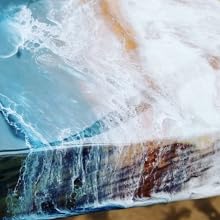
High Gloss & Durable
High performance and Crystal clear! Produces a tough, high gloss, water and scratch resistant coating.
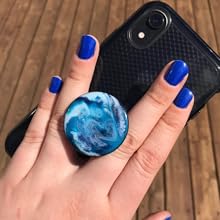
Versatile
Can be used for a wide variety of applications, art, and home projects.

Food Safe
Food Safe formula for artistic items used around food, such as trays, tumblers, and glassware.
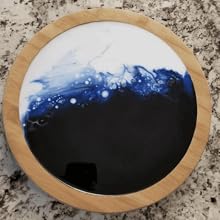
Easy 1:1 Self Leveling Formula
Use our product with ease, featuring an easy 1:1 self-leveling formula!
Beautiful and Versatile, Crystal Clear Finish…Every Single Time!
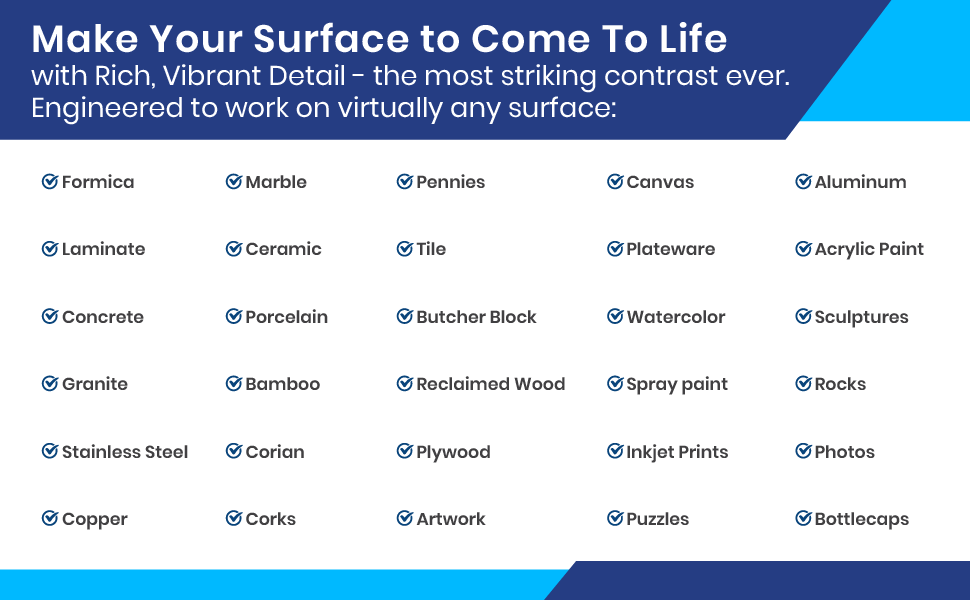
Easy To Use 1:1 Formula, no experience needed
 Step 1: Measure
Step 1: Measure
Pour equal parts of resin and hardener into a clean mixing container or graduated mixing tubs, using a 1:1 ratio (by volume) It is crucial that the product is measured accurately and mixed thoroughly. Measure 1 part RESIN to 1 part HARDENER by volume. Do NOT vary this ratio. Our Epoxy is formulated to cure at a specific mixing proportion, and any variances can cause the product never fully to cure. We recommend always pouring the HARDENER into your mixing container first, followed by the RESIN. This will help the two components mix thoroughly.
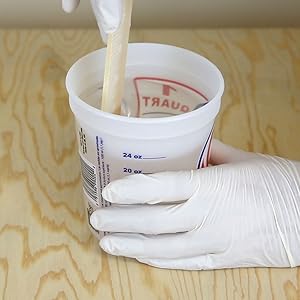
Step 2: Mix
First Mix: Mix with a flat bottom stir stick or spatula being sure to scrape the sides and bottom of the container as you go. Your mixture will appear hazy at first, and then become more transparent as the resin and hardener molecules begin to blend within three to five minutes.
Second Mix: Pour the Resin and Hardener from your first container into a second container scraping all the mixture out from the sides and bottom of the cup. Thoroughly mix for an additional three minutes.
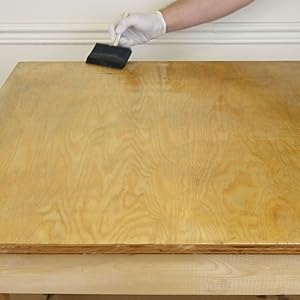
Step 3: Seal Coat Stage
The best way to apply a seal coat is to start on one end of the table and pour the resin all the length of the surface, zigzagging as you go. Then use a foam brush to drag the resin across the entire surface to achieve an even coat. The epoxy cures rather quickly in the container, so it is necessary to paint the seal coat on quickly or mix up a smaller amount so that it does not cure in the container while you are still working on it. The seal coat does not need to be smooth as the flood coat will fill in the brush strokes and irregularities making it crystal clear. Once the entire surface is sealed, wait 4-6 hours to pour the flood coat. Do not exceed 10 hours or you run the risk of the flood coat not blending into the seal coat flawlessly.
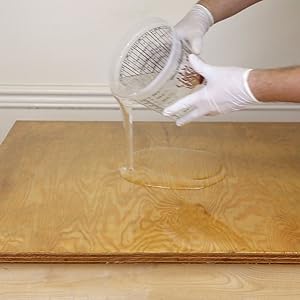
Step 4: Flood Coat Stage
Each flood coat self-levels at approximately 1/8” thick. If depths thicker than 1/8” are desired multiple coats are necessary. You must wait at least 4 to 10 hours between flood coats. The epoxy will still be tacky so the next pour will stick to it.
The best way to apply the flood coat is to start on one end and pour the resin the entire length of the surface, zigzagging as you go. After you are finished pouring, set the container down. Do NOT try to scrape anything else out of the bucket. Because you are pouring about three times the amount of product you did with the seal coat, the material will immediately start to flow out.
 Step 5: Remove Air Bubbles
Step 5: Remove Air Bubbles
Once you have sufficiently covered the entire surface with your flood coat, you will begin the process of popping air bubbles. The best tool for removing bubbles is a small propane torch. Hold the flame approximately 6 to 10 inches away from the table top and quickly sweep across the entire surface using an ironing motion. You will immediately see the bubbles start to pop. Do this until all the bubbles are gone from the surface of your table.
* After pouring your epoxy, it is common for air bubbles to form. Bubbles can continue to develop for up to 60 minutes after the curing process has begun. The most efficient way to get rid of them is to run a blowtorch over the surface sporadically 10 – 15 min at a time.

Step 6: Curing Process
After applying your final coat, the product should be kept in a clean, dust-free environment at a minimum of 75-80° F degrees. The product takes approximately 12-14 hours to dry to the touch. However, the product should not be put into any use for at least three days which will allow it to achieve sufficient hardness to resist scratching. At temperatures below 75 F, the product will take longer to cure and might not cure to complete hardness.
*Not intended for outdoor use, use over oil based stains, urethanes, etc.
Note: All epoxy has natural color variations or tint. The color of the surface the epoxy is applied to may minimize or accentuate the tint. White surfaces are always the most challenging to work with in regards to accentuating epoxy tint. White itself has many tints. The appearance of a white surface after being coated with epoxy is also the most influenced by lighting. Example LED “daylight” bulb lighting compared to “Soft / Warm” lighting.
Click here for more information on Epoxy
Review this product on Youtube
| Brand |
|---|
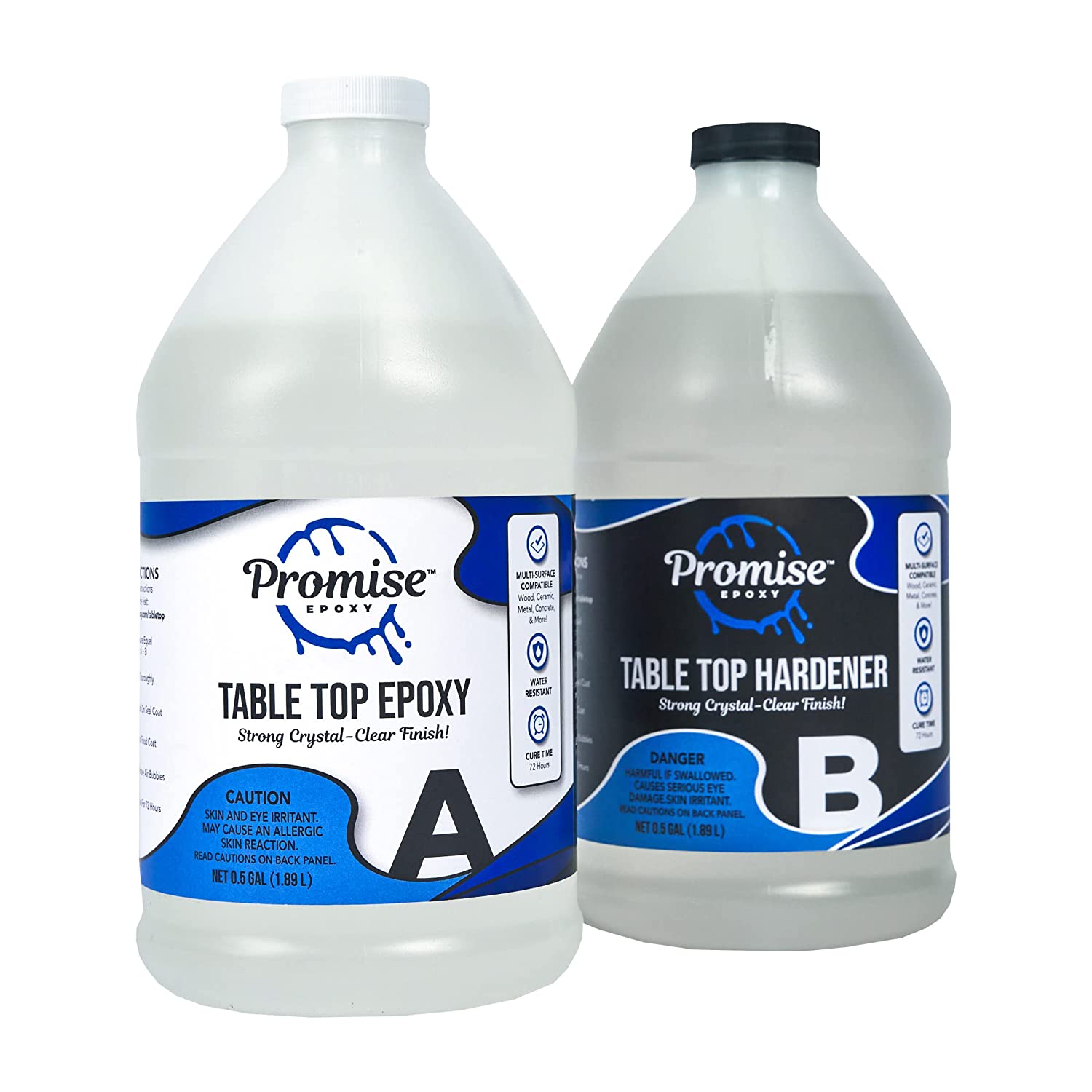


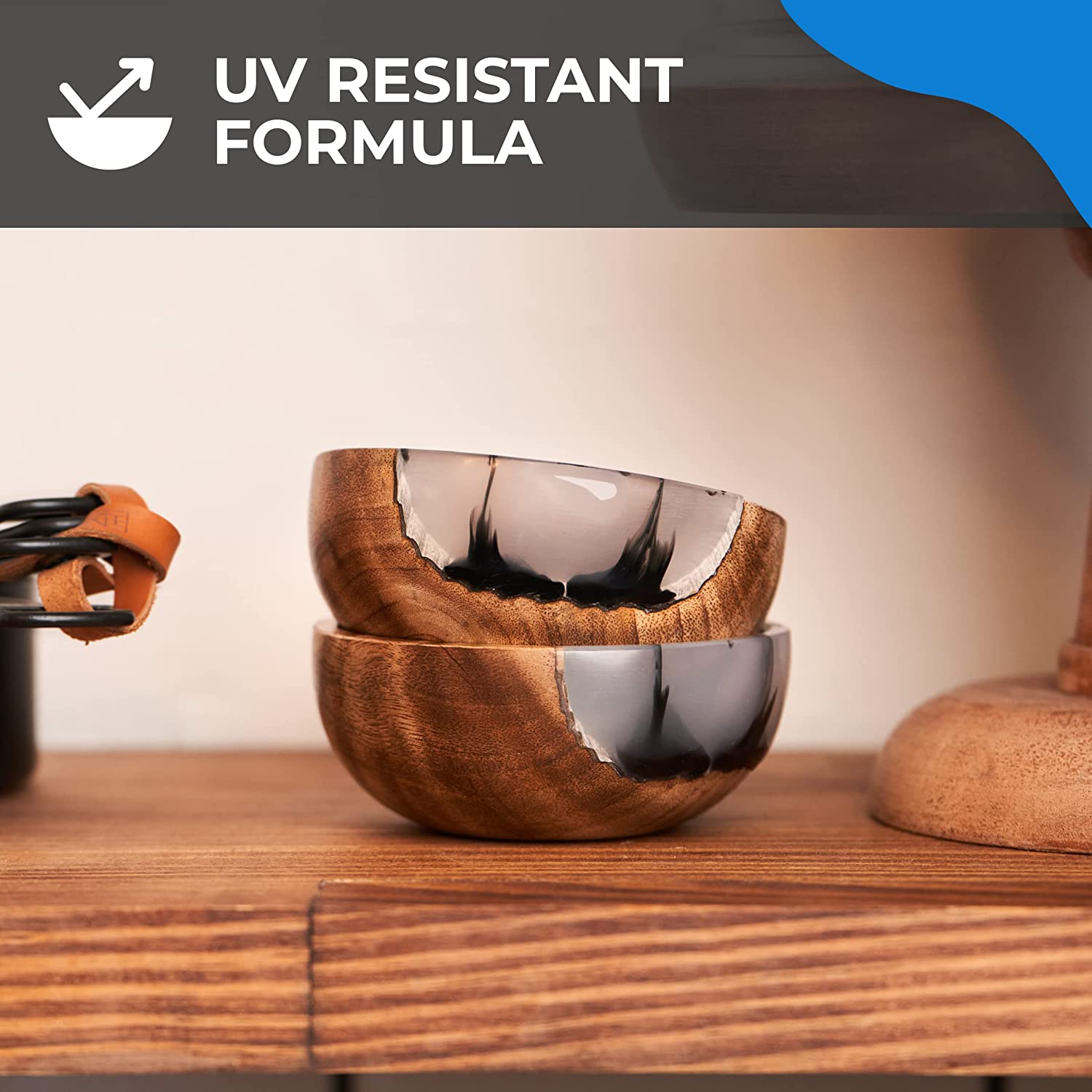
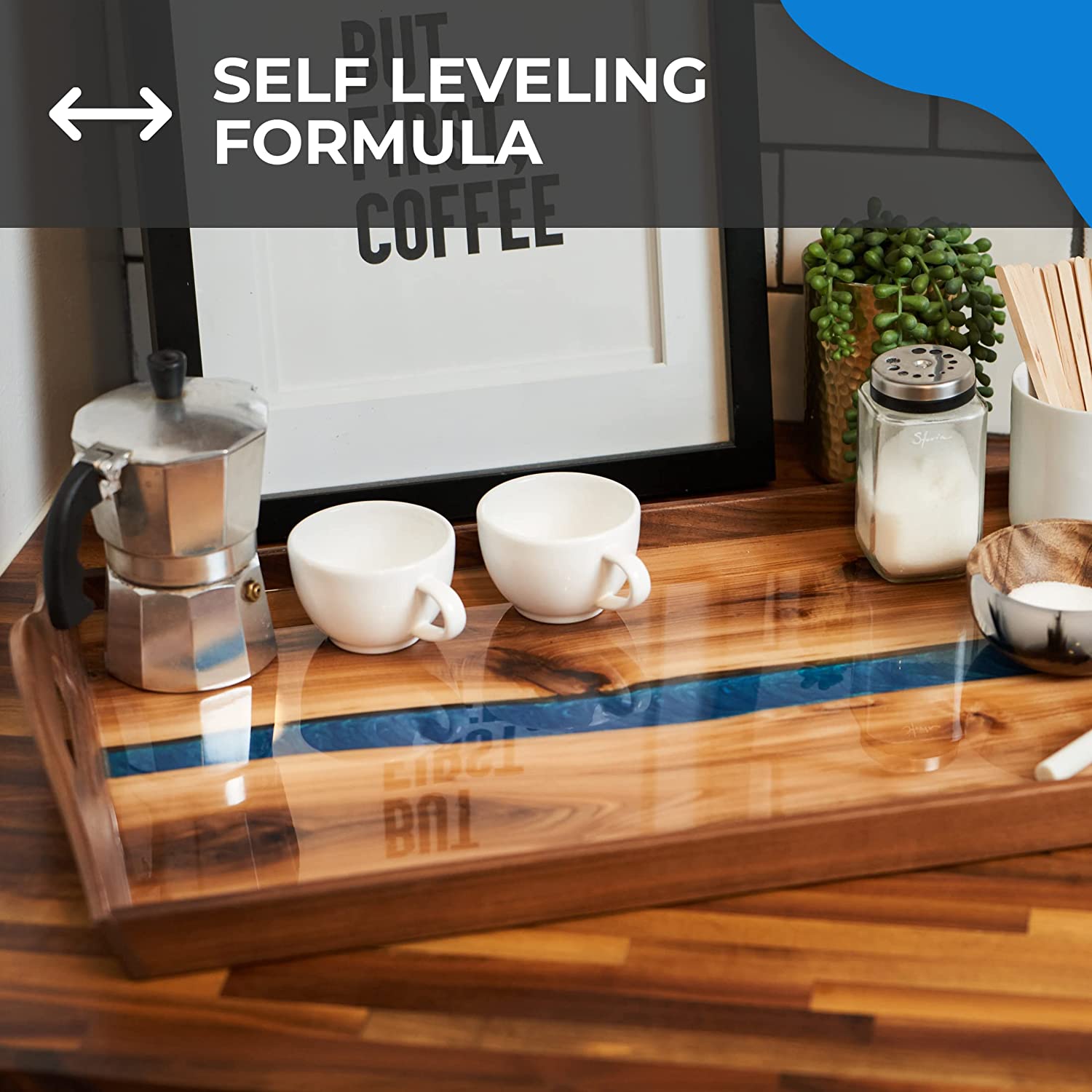

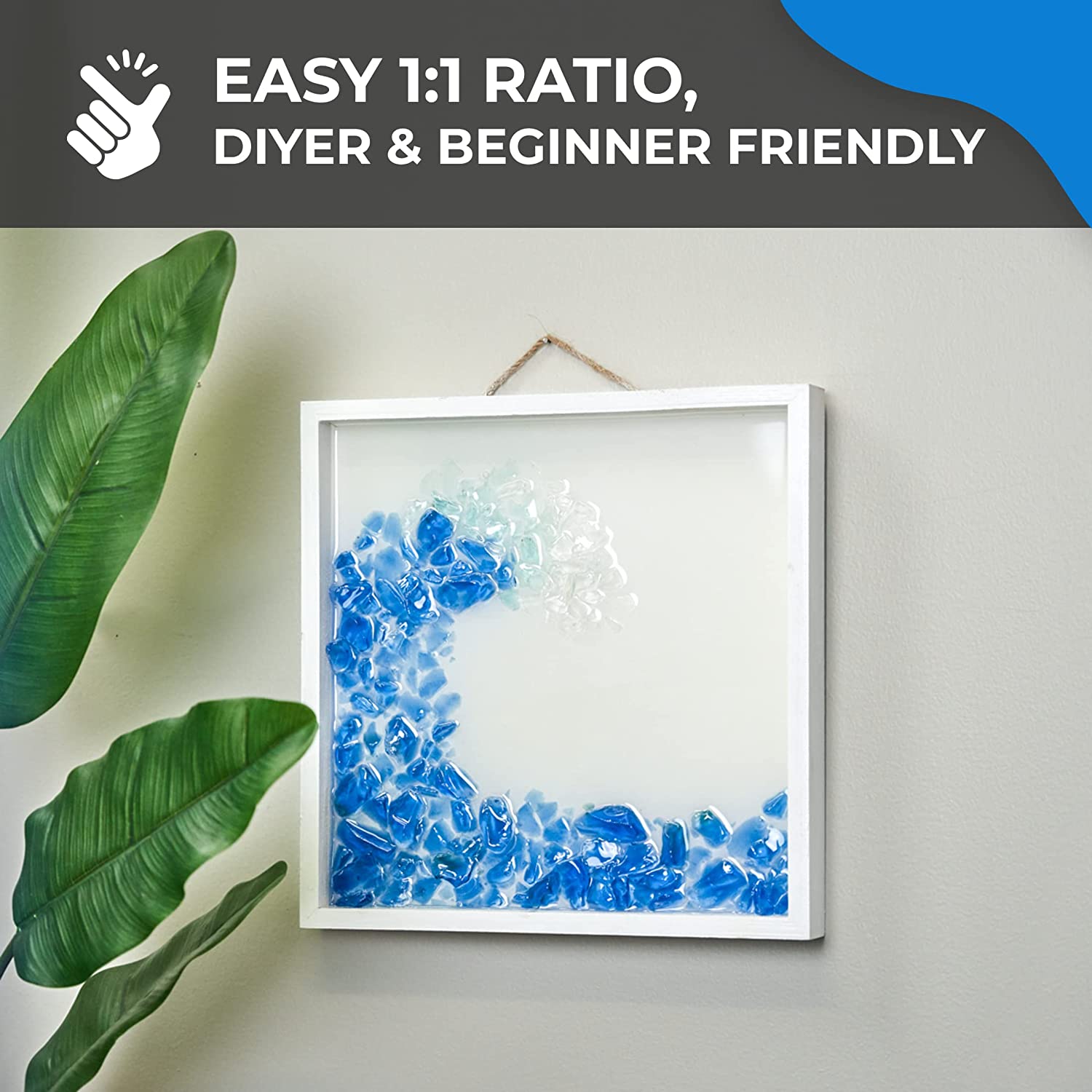
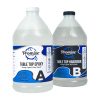












Reviews
There are no reviews yet.